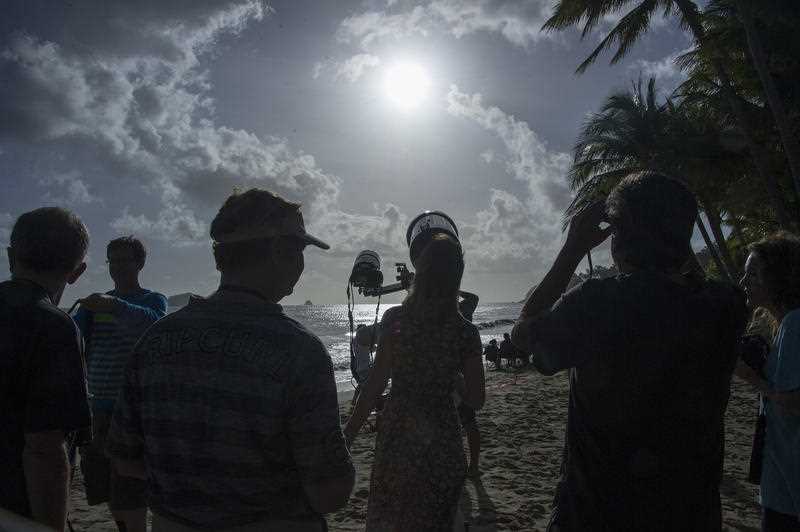Day is set to turn into night when the sun vanishes from the sky during a rare total solar eclipse on a remote peninsula on the Western Australian coast.
About 20,000 eclipse chasers from around the world are expected to witness the phenomenon on Thursday, when the moon casts a 40-kilometre-wide shadow over the World Heritage-listed Ningaloo reef region.
“A total solar eclipse can be a life-changing experience, the temperature drops, the land and the sea looks different, and the stars come out,” CSIRO deputy space and astronomy director Mark Cheung said.
“These events are even more special because they are so rare and fall on such small areas where people can witness them.”
The eclipse will take about three hours as the moon passes between the sun and earth as a partial, then total eclipse, with darkness set to last about 62 seconds from 11.29am AWST (1.29pm AEST).
During that time, a bright solar corona that looks like a white halo may also become visible on the North West Cape when the moon completely covers the sun.
Veteran astrophotographer and eclipse chaser Terry Cuttle said it will be an “absolutely amazing spectacle and experience”.
“Two or three minutes before the total eclipse you see the shadow of the moon coming,” he said.
“It can look like a really ominous threatening thunderstorm but it’s completely silent … It’s awesome … Then, within a couple of minutes, the sun disappears.”
Mr Cuttle said in the last seconds the sun’s rays shine over the edge of the moon through valleys, creating an effect called “a diamond ring”.
“Then the moon completely covers the sun and you get to see the sun’s outer atmosphere … It streams out from the sun in the shape of the sun’s magnetic field,” he said.
“It’s just so black surrounded by the corona and then stars and planets come out … You get to see the entire solar system.”
Wildlife biologist Bill Bateman said animal behaviour may also change.
“Animals seem to react to the dimming of the sun as if it were an unexpected sunset and the end of the day,” he said.
“Birds may stop singing and move to roosting sites, lizards may move to night-time cover.”
Thursday’s eclipse is also considered rare because it’s a hybrid eclipse that starts as an annular eclipse in the Indian Ocean before changing into a total eclipse near Exmouth.
The town, which normally has a population of about 2800, has swollen in recent days as thousands of visitors keen to witness the eclipse arrive by air and road.
Campsites have sprung up in front yards and on vacant blocks of land, as a festival atmosphere takes hold.
People across Australia can also see the phenomena as a partial solar eclipse, with 77 per cent of the sun covered by the moon in Perth, 19 per cent in Sydney, 21 per cent in Melbourne and 27 per cent in Brisbane.
By Aaron Bunch in Exmouth



